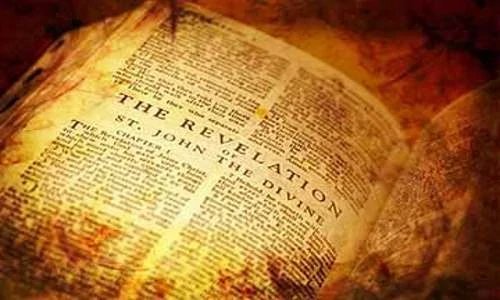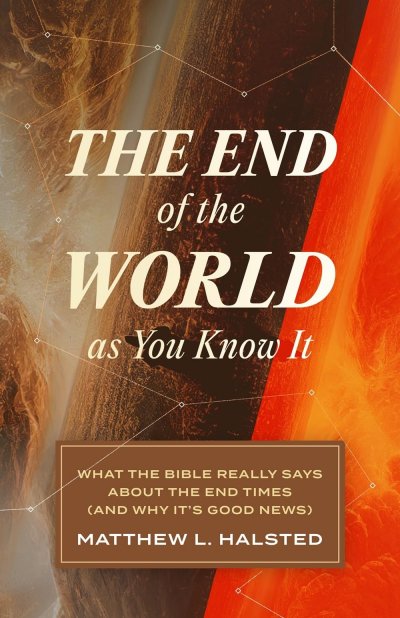
A. The Nature of Apocalyptic
The Book of Revelation, also known as the Apocalypse of John, is the last book of the Bible and is, for most Christians and Messianics, one of the least read and most difficult to understand. A few passages from it are well known and well loved (e.g. Rev.7:9-17) but for the most part modern 21st century readers find the book unintelligible. This is largely because the book abounds in symbolism of a type that that is no longer used and to which very, very few Bible students and exegetes possess the key. Yet this kind of imagery was readily comprehensible to those of the first century AD. This in part accounts for our difficulties. The author assumed that his readers would detect and understand his allusions and therefore he felt no need to make explanations. It is therefore up to biblical historians and linguists to supply the necessary information to enable those explanations to be accurately made, something we attempt to do in the articles in this Register.
The Book of Revelation belongs to a class of revelatory literature known as apocalyptic, from the Greek apokalupsis meaning a 'revealing' or 'unveiling', a 'drawing of the curtain aside'. It is the only book of this type in the Messianic Scriptures (New Testament), though there are apocalyptic passages in other books like Matthew 24, and the visions of Daniel belong to the same class. Characteristic of apocalyptic is the thought that Elohim (God) is sovereign and that ultimately He will intervene in catastrophic fashion to bring to pass His good and perfect will. He is opposed by powerful and varied forces of evil, and these are usually referred to symbolically as beasts, horns, etc.. There are visions, malakim (angels) speak, there is the clash of mighty forces, and ultimately the persecuted qodeshim (saints, set-apart ones) are vindicated. Much of this is conventional, which is why the first readers of Revelation would have understood it quite easily, but in the hands of many enthusiasts it has led to turgid and grotesque fantasies. Biblical apocalyptic is much more restrained.
Another difference between the Book of Revelation and the usual run of apocalyptic is that the author's name is given whereas apocalypses were usually pseudonymous. The writers of the latter (both Jewish and Christian) took names from the great ones of the past and ascribed their works to them. These are known as Pseudepigrapha, literally 'false writings'. However, with Revelation, the Ruach haQodesh (Holy Spirit) has made use of a recognised literary form. However, Revelation is not simply a conventional apocalypse which is why care must be taken not to lump it together with the pseudepigraphs - it has features of its own, and is a genuine prophecy, as the first three verses indicate.
B. Israelite Self-Awareness
The Israelites never forgot that they were Elohim's (God's) chosen people, and they never lost their faith and hope that some day this would be proved for all to see, and that they would become masters of the world, for they tended to think they were chosen for power and for glory rather than for service and responsibility, a weakeness and Achillee's heel that still dogs them, and other religionists, to this day.
At first they believed that they would become great when there emerged a king of David's line to lead them to conquest. This was the Messiah whom they expected, and they thought of him in human terms. As time went on they began to think in terms of a man possessing supernatural powers instead of a mere human leader. Their conquest by, and subjection to, Assyrians, Babylonians, Persians, Greeks and Romans made them realise their own smallness and the world's vastness and in time they began to see that their greatness could never be achieved by human means at all. Their small territory was only 120 miles from north to south, and less than 50 miles from east to west. So they came to believe, not in any human leader, but in the direct intervention of Elohim (God). The day would come, they believed, when Yahweh Himself would come striding into history and lead them to the greatness and glory they had originally and arrogantly imagined.
The belief emerged that all time was divided into two æons or ages:
- 1. The Present Age, which is wholly bad and wholly under the dominion of Satan, and quite beyond cure and reformation; and
- 2. The Age-to-Come, which was the Golden Age of Yahweh and of His people, Israel.
What they did not know was how to turn the one into the other. It would happen on the 'Day of Yahweh' ('Day of the LORD'), the great Day when Elohim (God) Himself would enter history. It would be a day of cosmic disintegration, when the sun would be turned into darkness and the moon into blood, when the mountains hurled into the sea, and when all order would become chaos. It would be a day of dreadful judgment, and then the new world would be born, and all would be well. That much they knew from the navi'im (prophets) of the Tanakh (Old Testament).
The 'Apocalypses' were the books in which seers and visionaries set out what they believed would happen on the 'Day of Yahweh'. All Apocalypses therefore tend to be unintelligible because they try to describe the indescribable, to express the inexpressible, to put into signs and symbols the terrors and the glories of the end time.
This is what the Apocalypse of John or Book of Revelation does but unlike the pseudepigraphs that came before it, and a few after it, saturated as they were in fantasies of the flesh rather than authentic revelation, its end is not the rabbinical vision of the 'Day of Yahweh' but the messianic vision of the coming again of Yah'shua the Messiah (Jesus Christ) in majesty, glory and victory. To paint this picture it takes over much of the imagery and the dramatic apparatus which had attached to the 'Day of Yahweh'. Tanakh (Old Testament) passages like Isaiah 23, Joel 2, and Zephaniah 1 are the basis of the picture. This is a typical characteristic of Apocalyse, describing the indescribable events which will happen when this world vanishes and a new world is born. We have only to see this to see that much of it cannot be taken literally. It is a poet's vision far more than it is an historical story, though it contains history too and is therefore both. It is the davar (word) of a navi (prophet) and a ro'eh (visionary, seer) (Rev.1:3; 22:9-10), and not only a literal timetable and description of celestial events-to-come.
C. Outline of Contents
The book begins with a vision of the risen Master, who gives messages to 7 congregations (churches), those in Ephesus, Smyrna, Pergamos, Thyatira, Sardis, Philadelphia and Laodicea, a group of cities in the Roman province of Asia (1:1-2:22) that were the apostle John's 'field' or 'bishopric' (1:3). The messages rebuke these congregations where they have failed and encourages them on the path of Christian/Messianic service. Then come end-time visions of Elohim (God) and of the Lamb (4:1-5:14), after which we read of the opening od the 7 seals. As each seal is opened there is a vision recorded (6:1-17; 8:1). This leads on to the sounding of the 7 trumpets, with a vision recorded after each trumpet is sounded (8:2-9:21; 11:15-19). Between the 6th and 7th seals there is an interlude (7:1-17), and another between the 6th and 7th trumpets (10:1-11:14). John then records various wonders in heaven, a woman bringing forth a man child, and opposed by Satan (12:1-17), beasts opposing themselves to Elohim (God) (13:1-18), the Lamb on Mount Zion and His followers (14:1-20). Next the 7 last plagues are recounted. John sees 7 malakim (angels) with bowls, and as each pours out his bowl upon the earth one of the plagues follows (15:1-16:21). Further judgments are then denounced on the scarlet woman, and on Babylon (17:1-19:21) and the book concludes visions of the millennium, of the new heavens and the new earth (20:1-22:21).
It is uncertain how much of the book duplicates other sections. The recurrence of the number 7 makes it fairly clear that some, at least, of the series are described in more than one way. What is certain is that the book envisages terrific opposition to Yahweh and the people of Elohim (God), and that in the end Yahweh will triumph over every evil thing.
The Book of Revelation shows nothing of the Yah'shua (Jesus) of the Gospels but rather the warrior Messiah. It has been rightly said that Revelation is the most Judahite book in the Messianic Scriptures (New Testament), and this is true. There is hardly anything in it which cannot be paralleled from the Tanakh (Old Testament), and is a testimony of the ongoing validity of the earlier writings, specifically confirmed by the mitzvah (commandment) to maintain Torah-obedience alongside faith in Yah'shua the Messiah (Jesus Christ) (12:17; 14:12; 22:14). The qodeshim (saints, set-apart ones) are to sing a duet - the Song of Moses and the Lamb (15:3). Indeed, it calls Yah'shua (Jesus) the 'Lamb' more often than any book in the New Testament (e.g. 5:8; 6:1; 7:17; 14:1). But it is a strange, unfamiliar picture, for we hear of the wrath of the Lamb, the victory of the Lamb and the might of the Lamb. This is a 100 per cent Messianic Israelite picture. The great Israelite heroes like David were depicted as horned lambs. There is no gentleness, meekness and mildness here at all, only ineluctable, inescapable power because it specifically reveals to us the Omnipotent Deity of Messiah in Judgment.
What is the historical background to all this? When we read the Book of Revelation, we are at once struck by its attitude to the state because it is quite different from any other book in the Messianic Scriptures (New Testament). The other books respect the state and tell believers to be good citizens (Rom.13:1-7; 1 Tim.22:2; 1 Pet.2:13-17). But in Revelation, Rome is the great harlot, drunk with the blood of the qodeshim (saints) and the martyrs, for in it Babylon stands for Rome (17:1-6). So what had gone wrong?
Bit by bit the Roman Emperor had come to be regarded as a god. He embodied the spirit of Rome, and in very gratitude for good rule people had first worshipped the spirit of Rome, and then the Emperor as the incarnation of that spirit. At first the Emperors were embarrassed by this, for they had not sought it. Rome stretched from Britain to the Euphrates and from the Danube to North Africa. What could give some some kind of unity to this vast polyglot (multi-racial, multi-racial and multi-religious) Empire which comprised most of the known world? The one thing that could unify it was Caesar-worship. So the day came, when once a year every citizen had to burn a pinch of incense to the godhead of Caesar and say, 'Caesar is Lord'. This true believers never would do. The Messiah, and Messiah alone, was 'Lord' or 'Master'. And that is why they were persecuted. If they had conformed and burned the incense and proclaimed Caesar's claimed deity, they could have gone off and worshipped anything. But they would not, and so they became what the poet, Sir William Watson, called "the panting, huddled flock, whose crime was Christ".
The Book of Revelation comes from that time when men and women had to choose between Caesar and Christ, between the State and Elohim (God), between false religion (or no religion) and true, when to be true to Christ was to be liable to die. Similar choices between the mandates of a murderous, despotic, genocidal ruler, or a false idolatrous religion and Christ upon pain of death, still have to be made today. That is why it hates Rome, and that is why it looks so eagerly forward to the end of the present evil æon (age), and the time when Yah'shua's (Jesus') enemies will be vanquished and Elohim (God) will reign for ever and ever.
D. Authorship and Date
Tradition affirms that the author was the apostle John and goes back as far as AD 140 to Justin Martyr and is supposed by Irenaeus and many of the other 'fathers'. The principle objection to this is the style of the Greek which in many respects is unlike the other Johannine writings. It is so unusual and sometimes shows such scant respect for the rules of Greek grammar that one is faced with two possible explanations:
- 1. That John the Apostle was not the author but another 'John' (not the apostle), of unknown identity, with poor Greek language skills (the view of liberal scholars); or
- 2. This is a translation from John's Hebrew or Aramaic by an unknown, unlearned Greek translator (the view of this ministry).
This book was obviously written at a time when the Messianic Community (Church) was undergoing persecution and difficulty. During the possible time for the composition of the book the two most important periods when this was so were during the reigns of Nero (AD 54-68) and Domitian (AD 81-96). The principle argument for the former date is Revelation 17:9-10a, "Here is the mind which has wisdom: the seven heads are seven mountains on which the woman sits. There are also seven kings. Five have fallen, one is, and the other has not yet come" (NKJV). If this refers to the Emperors of Rome, then Nero was the fifth, and the writing would date from shortly after his reign. This is strengthened by the prophecy that "the beast that was, and is not, is himself also the eighth, and is of the seven" (Rev.17:11, NKJV). This appears to refer to the 'Nero-redivivus myth', the idea that Nero, though dead, would appear once more on this earth. Support is adduced from Revelation 13:18 which gives "the number of the beast" (NKJV) as 666.
Numbers were written in the 1st century, not with our convenient notation, but with letters of the alphabet. Each letter had a numerical value. By taking the numerical values of the letters making up 'Nero Caesar' in Hebrew (evidence, incidentally, that the text was originally written in Hebrew) we get 666. This explanation tends to be rejected by Greek Primacists who insist the book was originally penned in Greek, and not Hebrew or Aramaic, the mother tongues of the apostle John.
The later date is, however, attested by a number of ancient authors, such as Irenaeus and Eusebius, who state categorically that the book was written in the time of Domitian. This si supported by certain indications of a general type within the book, though not by specific allusions to identifiable events. Thus the book speaks of certain groups of believers as complacent and declining in spirituality (Rev.2-3). In Nero's reign the Messianic Community (Church) was still very young and vigorous. By the time of Domitian there is more possibility of development and of degeneration. Most scholars today are agreed that the latter date is to be preferred and this is the position of this ministry.
E. Interpretation
Four chief ways of looking at, and interpreting, the Book of Revelation are:
- 1. The Preterist view;
- 2. The Historical view;
- 3. The Futurist view; and
- 4. The Idealist or Poetic view.
These are discussed at length in the Book of Revelation III & IV: The Four Methods of Interpretation, Part A and Part B.
F. Conclusion
The Book of Revelation is as majestic as it is mysterious and magnetic," wrote New Testament scholar N.T.Wright. It is a book of profound theology, intense prophetic insight and dazzling literary accomplishment. Richard Bauckham, leading scholar in the field, has written that the Book of Revelation has "inspired the martyrs, nourished the imagination of visionary artists and hymn-writers, resourced prophetic critiques of oppression and corruption in state and church, and sustained hope and resistance in the most hopeless situations". It is one of the greatest theological achievements of early Christianity - we may not fully understand it but nobody can afford to ignore it. Satan takes it very seriously indeed because it records his own eventual doom and the eventual triumph of the qodeshim (saints, set-apart ones) whom he has been trying to utterly destroy from the beginning. We, too, should take it very seriously because it details how the present age ends and promises a new messianic one. What it says will happen.
Acknowledgements
[1] William Barclay, The New Testament: A New Translation (Fontana/Collins, London: 1969)
[2] Dr. L.L.Morris, Book of Revelation (IVP, Leicester, England: 1976)
[3] Tom Wright, Revelation for Everyone (SPCK, London: 2011)
[4] E.W.Bullinger, Commentary on the Book of Revelation (Kregel, Grand Rapids, MI: 1984)
[5] N.T.Wright & Michael F.Bird, The New Testament in Its World (Zondervan Academic, Grand Rapids, MI; 2019)
(7 January 2022)
|





